 September 26, 2019 John E. Ross, KD8IDJ, Editor
| ||||||
ARRL Thanks Official Observers as Volunteer Monitor Program is Set to Debut As the September 30 date for the closing of the Official Observer (OO) program nears, ARRL has expressed deep appreciation to the hundreds of volunteers who gave their time as Official Observers to help preserve the integrity of the Amateur Radio bands.
"Thank you for your dedication and service," ARRL Regulatory Information Manager Dan Henderson, N1ND, said. "It was the good work of the OOs over many years that laid the foundation for the FCC to recommend this new agreement for enforcement." The FCC proposed the program following the closures of several FCC regional offices and a reduction in field staff. Last February, Riley Hollingsworth, K4ZDH, who once handled Amateur Radio enforcement for the FCC, was named to oversee the development and implementation phases of the Volunteer Monitor program. Under the new VM program, volunteers trained and vetted by ARRL will monitor the airwaves and gather evidence that could be used to correct misconduct as well as to recognize exemplary on-air operation. ARRL will refer instances of flagrant violation to the FCC for action, in accordance with FCC guidelines, and the FCC will give priority to enforcement cases developed by the VM program.
Applicants underwent a training and certification program administered by ARRL and were vetted by ARRL through at least one oral interview and a preliminary evaluation by ARRL staff. Volunteer Monitors will serve 3-year terms at the pleasure of ARRL. The objectives of the Volunteer Monitoring Program include improving and promoting knowledge and compliance of FCC Amateur Radio Service rules, extending and preserving the tradition of self-regulation and self-administration of the Amateur Radio Service by volunteers, and enabling the FCC Enforcement Bureau "to more efficiently and effectively utilize its resources in enforcing the Communications Act and Commission rules," according to the MOU. ARRL Sets Facebook Live Event for Collegiate Amateur Radio Clubs ARRL is inviting campus radio clubs to join a Facebook Live Event on Wednesday, October 16, at 6:30 PM PDT and MST; 7:30 PM MDT; 8:30 PM CDT, or 9:30 PM EDT. The University of Arizona Amateur Radio Club (K7UAZ) is hosting the event.
This event will stream live on the ARRL Collegiate Amateur Radio Initiative (CARI) Facebook group, where collegiate radio clubs may share information, techniques, and resources. The ARRL Collegiate Amateur Radio Initiative is sponsored in part by the W1YSM Snyder Family Collegiate Amateur Radio Endowment Fund. Nine Schools and Organizations Make the Cut for Ham Contacts with ISS Crew Amateur Radio on the International Space Station (ARISS) has announced that nine schools and organizations have been selected to host Amateur Radio contacts with International Space Station crew members during the first half of 2020. The selected host organizations must now complete an equipment plan that demonstrates their ability The schools and host organizations are: Celia Hays Elementary School, Rockwall, Texas; Golden Gate Middle School, Naples, Florida; J.P. McConnell Middle School, Loganville, Georgia; Kittredge Magnet School, Atlanta, Georgia; Maple Dale Elementary School, Cincinnati, Ohio; Monroe Carell Jr. Children's Hospital at Vanderbilt, Nashville, Tennessee; Oakwood School, Morgan Hill, California; Ramona Lutheran School, Ramona, California, and River Ridge High School, New Port Richey Florida. The primary goal of the ARISS program is to engage young people in science, technology, engineering, arts, and math (STEAM) activities and raise their awareness of space communication, radio communication, space exploration, and related areas of study and career possibilities. 1921 Solar Event May Have Been Bigger than Carrington Event Scientific American reports that, according to new data, the "New York Railroad Storm" of 1921 may have surpassed the intensity of the famous Carrington Event of 1859. In his paper published in the journal Space Weather, Jeffrey Love of the US Geological Survey and his colleagues reexamined the intensity of the 1921 event in greater detail than previously. Although different measures of intensity exist, geomagnetic storms are often rated on an index called disturbance storm time (Dst) -- a way of gauging global magnetic activity by averaging out values for the Peter Ward in his 2017 New York History Blog article "Strange Phenomena: The New York Railroad Storm" recounted that theatre-goers in New York City "marveled at the spectacle" of an iridescent cloud that was brighter than the moon. "On the roof of the Times Building, reporters, having discovered the telegraph lines to be curiously blocked, gathered to watch the aerial kaleidoscope," he wrote. As with the earlier Carrington Event, telegraph operators experienced wild fluctuations in the current on their circuits, while wireless propagation was enhanced. "The next day, papers reported that the Central New England railroad station (also home to the telegraph switchboard) had burned to the ground." Railroad officials later blamed the fire on the aurora. According to Ward's article, the lights were visible in New York, California, and Nevada. Especially in rural areas, "the lights were said to be brighter, appear closer to the ground, and even move with a swishing sound." Railroad and telegraph service were restored the following week, although one Western Union transatlantic cable showed signs of damage. "Delays and damage lead to some referring to it as the New York Railroad Storm," Ward wrote. A dramatic description of the event on the SolarStorms.org website said, "At 7:04 AM on May 15, the entire signal and switching system of the New York Central Railroad below 125th Street was put out of operation, followed by a fire in the control tower at 57th Street and Park Avenue." The short article said a telegraph operator reported being driven away from his station by flames that enveloped his switchboard and set the building on fire. "In Sweden a telephone station was reported to have been 'burned out,' and the storm interfered with telephone, telegraph, and cable traffic over most of Europe," the article said. The Doctor Will See You Now! "Keeping Water out of Coaxial Cables" is the topic of the new (September 26) episode of the ARRL The Doctor is In podcast. Listen...and learn!
Every 2 weeks, your host, QST Editor-in-Chief Steve Ford, WB8IMY, and the Doctor himself, Joel Hallas, W1ZR, will discuss a broad range of technical topics. You can also email your questions to doctor@arrl.org, and the Doctor may answer them in a future podcast. Enjoy ARRL The Doctor is In on Apple iTunes, or by using your iPhone or iPad podcast app (just search for ARRL The Doctor is In). You can also listen online at Blubrry, or at Stitcher (free registration required, or browse the site as a guest) and through the free Stitcher app for iOS, Kindle, or Android devices. If you've never listened to a podcast before, download our beginner's guide. The K7RA Solar Update Tad Cook, K7RA, Seattle, reports: Sorry, still no sunspots. Spaceweather.com reported on September 25 that the sun has been spotless for more than 3 weeks -- 23 consecutive days -- and with 89% spotless days this summer. So far in 2019, 72% of the days have been spotless, equal to what it was in the last solar minimum in 2008 and 2009. We transitioned through the fall equinox this week. This is a good time for HF propagation, even with low solar activity, whether you are in Northern Hemisphere's fall or Southern Hemisphere's spring. Over the September 19 - 25 reporting week, the average daily solar flux shifted marginally from 68.1 to 67.3, while average daily planetary A index reflected quiet geomagnetic conditions, dipping from 8.3 to 5.4. The mid-latitude index went from 8 to 4.6. Predicted solar flux is 67 on September 26 - October 3, and 68 on October 4 - November 9.
The planetary A index forecast of 28, 45, and 24 for September 27 - 29 is due to solar wind spewing from a large coronal hole, the same one that gave us planetary A indices of 38 and 45 on August 31 and September 1 -- now after making a trip around the sun. Look for it again on October 25 - 26. Sunspot numbers for September 19 - 25 were 0, 0, 0, 0, 0, 0, and 0, with a mean of 0. The 10.7-centimeter flux was 67.1, 67.2, 67.7, 68.3, 66.1, 67.1, and 67.5, with a mean of 67.3. Estimated planetary A indices were 4, 3, 7, 4, 3, 13, and 4, with a mean of 5.4. Middle latitude A index was 4, 3, 7, 2, 2, 11, and 3, with a mean of 4.6. A comprehensive K7RA Solar Update is posted Fridays on the ARRL website. For more information concerning radio propagation, visit the ARRL Technical Information Service, read "What the Numbers Mean...," and check out K9LA's Propagation Page. A propagation bulletin archive is available. Monthly charts offer propagation projections between the US and a dozen DX locations. Share your reports and observations. Just Ahead in Radiosport
See the ARRL Contest Calendar for more information. For in-depth reporting on Amateur Radio contesting, subscribe to The ARRL Contest Update via your ARRL member profile email preferences. WWV Centennial Celebration and Special Event Kick Off this Weekend The culmination of months of planning will come to a head this weekend as the WWV Centennial Celebration and the related WW0WWV Amateur Radio special event get under way. WW0WWV WW0WWV committee member Dave Swartz, W0DAS, said he's been addressing last-minute details and putting out "many little fires." Swartz is camping out at the WWV site ahead of the special event.
WWV is reputed to be among the oldest -- if not the oldest -- continuously operating radio stations in the world. It started out as an experimental station that eventually became a time and frequency standard, and WWV often broadcast music in its early years. WWV served as a beacon for Amateur Radio pioneers, who may only have had a rough idea of where they were transmitting. When they began, early time announcements were in CW. Voice announcements did not start until 1950. Time announcements used to be every 5 minutes, but WWV switched to announcing the time every 60 seconds in 1971. W3V East Coast Special Event Will Also Mark WWV Centennial An unrelated east coast special event, W3V in Maryland, will also celebrate the 100th anniversary of WWV. Originally an experimental/demonstration radio station, WWV was licensed to what then was called the National Bureau of Standards -- today NIST -- on October 1, 1919. The transmitter site, initially in the Washington, DC, suburbs, moved to the grounds of the Agricultural Research Center (BARC) in Beltsville, Maryland, in the 1930s, before relocating to Colorado in 1966.
The NASA Goddard Space Flight Center (GSFC) also was located on the BARC campus, and the Goddard Amateur Radio Club (GARC) will host the W3V special event September 28 - October 2 at the GARC club station, just north of the old WWV site. It will use the former WA3NAN space shuttle HF retransmission frequencies -- 3.860, 7.185, 14.295, 21.395, and 28.650 MHz -- as well as amateur satellites. For many years, the GARC retransmissions used 100-foot wooden antenna poles that it inherited from WWV. As part of the WWV centennial, HamSCI and the Case Amateur Radio Club of Case Western Reserve University (W8EDU) invites all radio amateurs and others capable of making highly accurate HF measurements to participate in the WWV Centennial Festival of Frequency Measurement. The event will take place on WWV's centennial, October 1, from 0000 to 2359 UTC (starting on Monday evening, September 30, in the Americas). Participants are requested to share their data with the HamSCI community on the Zenodo data-sharing site. Amateur Radio CubeSats among 15 Set to Launch on October 21 AMSAT reports that an Antares II launch vehicle will carry 15 CubeSats into orbit on October 21 from Wallops Island as part of NASA Educational Launch of Nanosatellites (ELaNa) Mission 25. Some will carry Amateur Radio payloads.
"Storm Area 51" Event Attracts Modest Crowd, Following ARES/RACES Deployment The much-heralded "Storm Area 51" event that started out as a joke on social media, prompted states of emergency in two Nevada counties
and spurred an Amateur Radio Emergency Service (ARES®)/Radio Amateur Civil Emergency Service (RACES) deployment. As do many storms, this one failed to live up to its hype. No one stormed anything, and no extraterrestrials were sighted, beyond variously costumed earthlings embracing the vibe. The Storm Area 51 weekend of September 20 - 22 instead morphed into a music festival and other events along a 50-mile stretch of highway running through the Nevada desert known as Extraterrestrial Highway (Nevada Highway 375). At the core of the whole concept was a call urging people to storm the mysterious US Air Force Facility known as Area 51 in the Nevada Test and Training Range to see if extraterrestrial life forms said to have been recovered by the US military following UFO sightings in the 1950s were being held there. The military issued stern warnings to stay away, and the FAA was reported to have closed the airspace above the area. Some 2 million initially indicated they were game for the event, but attendance predictions subsequently were tempered considerably. Ultimately, an estimated 3,000 to 4,000 visitors heeded the call, and only a hundred or so even made it to the main gate. A couple of people were arrested.
A major concern was that a horde of visitors to the small towns of Rachel and Hiko would come ill prepared for the desert environment and overwhelm the few available facilities available. With virtually no local infrastructure and faced with the possibility of being overrun by visitors, officials in Lincoln and Nye counties declared states of emergency. The town of Rachel, in Lincoln County, has just 50 inhabitants, and virtually all of the land is owned by the federal government. The county has just 20 law enforcement officers. No serious problems were reported. ARES teams planned to staff and support six incident-specific locations along Extraterrestrial Highway. Multiple Facebook sites opened to promote the "Alienstock" music festival in Rachel, and an Area 51 Basecamp in Hiko. Other UFO-inspired events popped up along desolate Extraterrestrial Highway. Law enforcement and medical personnel were posted, along with the Nevada National Guard. Visitors came from as far away as Australia. In Brief...
Upcoming ARRL Section, State, and Division Conventions
Find conventions and hamfests in your area
. .
Subscribe to...
Free of charge to ARRL members...
| ||||||
 The Official Observer program has served the Amateur Radio community and assisted the FCC Enforcement Bureau for more than 85 years. The OO program is giving way to the new Volunteer Monitor (
The Official Observer program has served the Amateur Radio community and assisted the FCC Enforcement Bureau for more than 85 years. The OO program is giving way to the new Volunteer Monitor (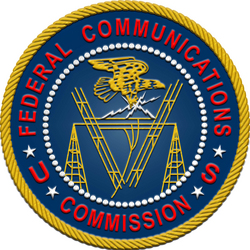 Official Observers were invited to apply to become Volunteer Monitors, and many did. The requirements for being a Volunteer Monitor include:
Official Observers were invited to apply to become Volunteer Monitors, and many did. The requirements for being a Volunteer Monitor include:.JPG) ARRL staff member Bob Inderbitzen, NQ1R, and students from the radio club will discuss topics involving Amateur Radio clubs at colleges and universities, including how to recruit student members, popular activities for campus radio clubs, and Amateur Radio as a springboard for career connections, networking, and practical experience. Your ideas and questions are welcome, and student radio club members and advisors may participate.
ARRL staff member Bob Inderbitzen, NQ1R, and students from the radio club will discuss topics involving Amateur Radio clubs at colleges and universities, including how to recruit student members, popular activities for campus radio clubs, and Amateur Radio as a springboard for career connections, networking, and practical experience. Your ideas and questions are welcome, and student radio club members and advisors may participate.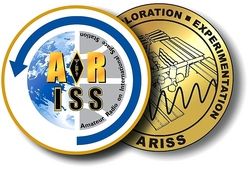 to execute the ham radio contact. Once a plan is approved, the final selected schools/organizations will have contacts scheduled as their availability matches up with the opportunities offered by NASA.
to execute the ham radio contact. Once a plan is approved, the final selected schools/organizations will have contacts scheduled as their availability matches up with the opportunities offered by NASA..jpg) strength of Earth's magnetic field measured at multiple locations. Earth's baseline Dst level is about -20 nanoteslas (nT), with a "superstorm" condition occurring when levels fall below -250 nT. Studies of the very limited magnetic data from the Carrington Event peg its intensity at anywhere from -850 to -1,050 nT. According to Love's study, the 1921 storm came in at about -907 nT.
strength of Earth's magnetic field measured at multiple locations. Earth's baseline Dst level is about -20 nanoteslas (nT), with a "superstorm" condition occurring when levels fall below -250 nT. Studies of the very limited magnetic data from the Carrington Event peg its intensity at anywhere from -850 to -1,050 nT. According to Love's study, the 1921 storm came in at about -907 nT. Sponsored by
Sponsored by 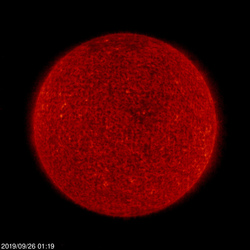 Predicted planetary A index is 8, 28, 45, 24, and 12 on September 26 - 30; 12 and 8 on October 1 - 2; 5 on October 3 - 5; 12 on October 6; 5 on October 7 - 9; 8, 5, 8, 10, 8, and 8 on October 10 - 15; 5 on October 16 - 19; 12 and 8 on October 20 - 21; 5 on October 22 - 24; 25, 18, 10, 5, and 8 on October 25 - 29; 5 on October 30 - November 1; 10 on November 2; 5 on November 3 - 5, and 8, 5, 8, and 10 on November 6 - 9.
Predicted planetary A index is 8, 28, 45, 24, and 12 on September 26 - 30; 12 and 8 on October 1 - 2; 5 on October 3 - 5; 12 on October 6; 5 on October 7 - 9; 8, 5, 8, 10, 8, and 8 on October 10 - 15; 5 on October 16 - 19; 12 and 8 on October 20 - 21; 5 on October 22 - 24; 25, 18, 10, 5, and 8 on October 25 - 29; 5 on October 30 - November 1; 10 on November 2; 5 on November 3 - 5, and 8, 5, 8, and 10 on November 6 - 9.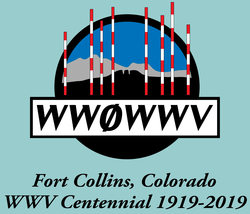 will begin operation on Saturday at 0000 UTC and continue through October 2 at 0000 UTC. The National Institute of Standards and Technology (
will begin operation on Saturday at 0000 UTC and continue through October 2 at 0000 UTC. The National Institute of Standards and Technology (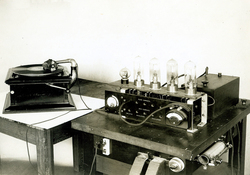

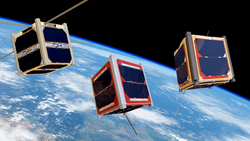
.jpg)

(1).jpg) Orlando HamCation
Orlando HamCation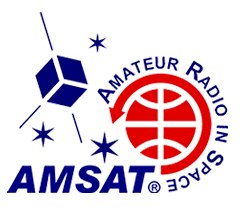 AMSAT has announced the results of its 2019 Board election. After ballots were tallied, Jerry Buxton, N0JY; Drew Glasbrenner, KO4MA; Patrick Stoddard, WD9EWK and Michelle Thompson, W5NYV, were elected by the AMSAT membership to serve for 2 years. The First Alternate is Brennan Price, N4QX. The Second Alternate is Howie Defelice, AB2S. Both will serve 1-year terms. Total number of votes cast was 1,052 (892 electronic plus 160 paper), with the tally as follows: Michelle Thompson, W5NYV, 675 votes; Patrick Stoddard, WD9EWK, 585 votes; Jerry Buxton, N0JY, 526 votes, and Drew Glasbrenner, KO4MA, 515 votes; Brennan Price, N4QX, 480 votes; Howie DeFelice, AB2S, 435 votes; Paul Stoetzer, N8HM, 399 votes, and Jeff Johns, WE4B, 366 votes. -- Thanks to AMSAT Secretary Clayton Coleman, W5PFG
AMSAT has announced the results of its 2019 Board election. After ballots were tallied, Jerry Buxton, N0JY; Drew Glasbrenner, KO4MA; Patrick Stoddard, WD9EWK and Michelle Thompson, W5NYV, were elected by the AMSAT membership to serve for 2 years. The First Alternate is Brennan Price, N4QX. The Second Alternate is Howie Defelice, AB2S. Both will serve 1-year terms. Total number of votes cast was 1,052 (892 electronic plus 160 paper), with the tally as follows: Michelle Thompson, W5NYV, 675 votes; Patrick Stoddard, WD9EWK, 585 votes; Jerry Buxton, N0JY, 526 votes, and Drew Glasbrenner, KO4MA, 515 votes; Brennan Price, N4QX, 480 votes; Howie DeFelice, AB2S, 435 votes; Paul Stoetzer, N8HM, 399 votes, and Jeff Johns, WE4B, 366 votes. -- Thanks to AMSAT Secretary Clayton Coleman, W5PFG 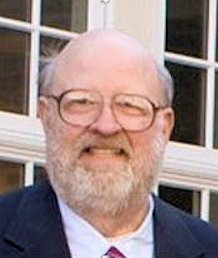 Former long-time ARRL Headquarters staffer John Nelson, K0IO, has died. Nelson, of Kellogg, Iowa, was an ARRL Life Member. He was 72. Nelson previously held W1GNC and W0DRE. Over his 25 years (1970 - 1995) on the Headquarters staff, Nelson served as circulation manager, deputy publications manager, and planning and financial analysis manager. He curated the former ARRL lobby display of vintage radio artifacts. In an article published last year about the 80th anniversary of the Newton (Iowa) Amateur Radio Association, Nelson told the Newton Daily News that he first became interested in ham radio when he was in sixth grade. A graduate of the University of South Dakota, Nelson was vice president of the Newton Amateur Radio Association, and an active storm spotter. "Ham radio was truly his passion," his sister Ellen Pierson, said. After retiring, he pursued a second career publishing books related to the history of the Rock Island Railroad. "John was always there to help, in his relatively soft-spoken way," said ARRL Radiosport and Field Services Manager Bart Jahnke, W9JJ, who had worked with Nelson.
Former long-time ARRL Headquarters staffer John Nelson, K0IO, has died. Nelson, of Kellogg, Iowa, was an ARRL Life Member. He was 72. Nelson previously held W1GNC and W0DRE. Over his 25 years (1970 - 1995) on the Headquarters staff, Nelson served as circulation manager, deputy publications manager, and planning and financial analysis manager. He curated the former ARRL lobby display of vintage radio artifacts. In an article published last year about the 80th anniversary of the Newton (Iowa) Amateur Radio Association, Nelson told the Newton Daily News that he first became interested in ham radio when he was in sixth grade. A graduate of the University of South Dakota, Nelson was vice president of the Newton Amateur Radio Association, and an active storm spotter. "Ham radio was truly his passion," his sister Ellen Pierson, said. After retiring, he pursued a second career publishing books related to the history of the Rock Island Railroad. "John was always there to help, in his relatively soft-spoken way," said ARRL Radiosport and Field Services Manager Bart Jahnke, W9JJ, who had worked with Nelson.







